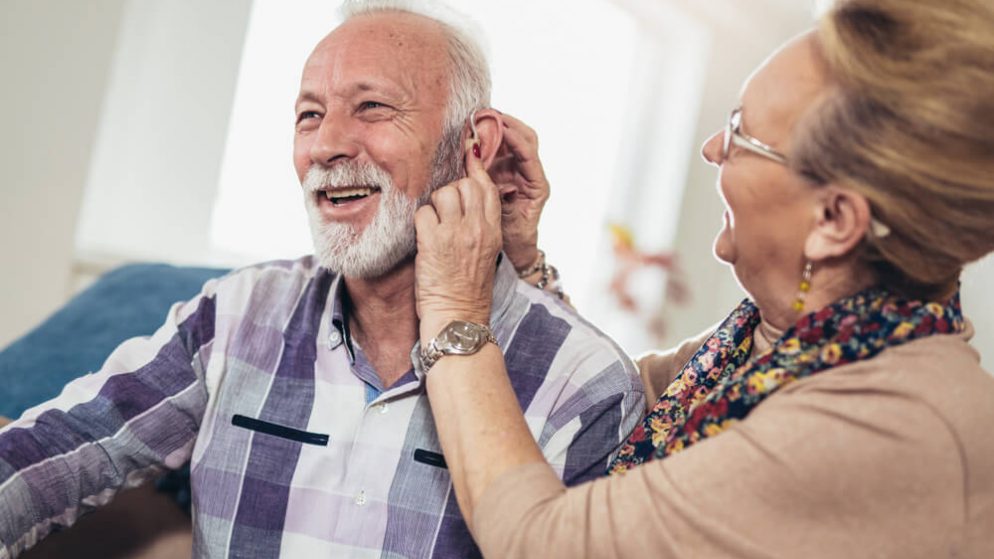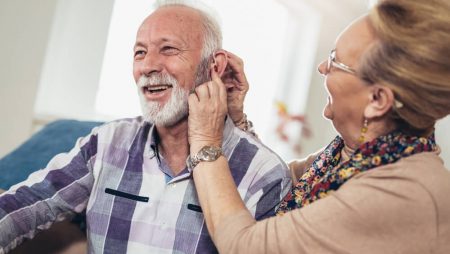



Get new exclusive access to healthcare business reports & breaking news




Smart homes are advancing the future of personal healthcare – without patients ever leaving the front door. Healthcare is already amid great technological evolution, especially with the rise of telehealth. Smart home technologies will take that to a new level in the years ahead.
From better air quality to at-home elder care, smart homes are already helping people live healthier lives. Smart home tech increases visibility so home occupants can adjust their habits and household for their own health needs and goals. Smart devices can also act as virtual assistants or nurses, using AI to set reminders, manage prescriptions, monitor behavior, and even order groceries.
No matter what a person’s healthcare priorities may be, smart home technology can help support them. Here are some of the amazing ways smart homes are bringing healthcare home.
Telehealth technology plays a central role in the rise of smart home healthcare tech. Telemedicine gives patients access to a larger pool of doctors and specialists. They can see a doctor without ever leaving home, making healthcare more accessible to many patients. People with limited mobility or lack easy access to transportation can attend regular doctor visits on their own terms.
All of these benefits point toward a future where the home is a launchpad for healthcare services. As of 2021, 85% of physicians in the U.S. are using some form of telehealth technology. Among them, 80% report telehealth improving patient care access.
There is particular popularity for telehealth in psychology, for services such as therapy and counseling. The nature of these services makes them easy to administer virtually. Plus, telehealth enables greater patient privacy and patients can remain in their own familiar, private space at home, reducing stress.
Smart home technology can support effective remote healthcare. While remote healthcare increases access and convenience, it can also reduce visibility since doctors are not physically seeing patients in the office. Smart home technology can help patients, doctors, and caretakers bridge that gap in a variety of ways.
One way that smart home technology is improving healthcare is air quality monitoring. Indoor air quality can have a major impact on health. People generally think of indoor air as cleaner than outdoor air because “pollution” comes from things like cars or factories.
However, pollutants are much more concentrated indoors. HVAC systems, air filters, humidity, and local climate can all contribute to indoor air pollutants, which can be just as harmful as outdoor air pollutants.
The U.S. Environmental Protection Agency (EPA) reports many serious health conditions linked to poor indoor air quality, including respiratory diseases, heart disease, irritation of the eyes and throat, headaches, dizziness, and even cancer.
The World Health Organization (WHO) also estimates that 3.2 million deaths are due to indoor air pollution every year. So, while it is important to limit exposure to outdoor air pollution, it is also crucial to remember the impact of indoor air pollution on health.
Smart home technology can help people improve their indoor air quality. Many smart thermostats are beginning to include air quality sensors so people can see how polluted their indoor air is. This increased visibility gives people more control over their indoor air quality and its impacts on their health. Smart thermostats can also give reminders to change air filters and get HVAC checkups.
Data and insights collected from smart thermostats may also help doctors diagnose and respond to certain conditions concerning indoor air pollution, such as those mentioned above.
Older adults spend more time at home than younger people due to health conditions or limited mobility. Aging in place can be a relaxing experience for many seniors, but it can also pose health risks due to isolation. Smart homes are making aging in place safer and easier for elders.
For example, AI-powered cameras can passively monitor older adults’ behavior at home to make sure they’re safe. These cameras and sensors can easily be integrated into any smart home. Using image recognition and computer vision, AI algorithms can detect when seniors fall, when they display “wandering behavior,” and other behavioral indicators of potential health concerns. Caregivers and doctors can use this information to ensure seniors stay safe and healthy without infringing on their autonomy.
Additionally, smart home devices can improve elders’ quality of life in simple but effective ways. A great example is smart internet of things (IoT) pill dispensers. Healthcare for older adults frequently includes medications that must be taken in specific quantities at specific times throughout the day. Unfortunately, older adults may struggle to remember to take medications or forget when or how much of a medication they have already taken.
Smart pill dispensers can resolve these challenges without requiring a nurse or caregiver. The smart home device sends reminders when it’s time to take a medication, monitors medication consumption, orders refills of medications, and reports medication intake data to caregivers.
Like AI monitoring cameras, this smart home device helps seniors live independently without risking their health and safety, greatly improving elder healthcare.
Smart home healthcare devices aren’t just for seniors. Everyone can benefit from the convenient reminders and automation features of smart home tech.
For example, smart appliances can foster healthy habits like a consistent and balanced diet. AI-powered appliances are one of today’s top smart home trends, including devices like smart refrigerators and smart washing machines. These devices help people stick to healthy habits and make more informed choices at home. This can help with patient adherence to healthcare priorities, such as dieting.
Smart fridges today can do all kinds of things, such as monitoring the exact contents of the fridge, tracking expiration dates, automatically creating a shopping list, reminding people when to go grocery shopping, and even automatically ordering groceries.
Some people have conditions that cause them to forget things or struggle to stick to habits like regularly going to the grocery store or using food before it expires. A smart fridge could resolve these issues by helping people eat healthier food before it expires. For instance, a bell pepper might not look expired from the outside, but the smart fridge can warn someone that the pepper is expired, preventing possible food poisoning.
Similarly, smart plant pots can help people meet their mental and emotional healthcare goals. Research has proven that house plants have many benefits, ranging from increased focus and productivity to improved air quality. Smart planters allow anyone to take good care of their house plants and gain access to their many health benefits.
Smart planters can use soil monitoring sensors to detect when a plant needs water, when it is sick, when it is “happy” or well-watered, and more. Some models also come with a smartphone app that can remind plant parents when it’s time to water their plants. A smart planter can contribute to self-care and mental and emotional healthcare treatments in smart homes, even for people who “don’t have a green thumb.”
There are some incredible healthcare tools on the horizon in smart home technology. While these new technologies are still in development, they have the potential to completely transform at-home healthcare.
For example, virtual reality and the metaverse could one day allow people to virtually visit doctors in a simulated doctor’s office. Today, people can already work with virtual fitness instructors to work out in VR, with popular games like “Supernatural” and “Beat Saber.” Shortly, the Metaverse could revolutionize telehealth. Rather than meeting with a doctor over the phone or a video call, patients can use VR to meet with doctors or therapists “in person.”
On an even more advanced level, AI doctors may one day come to smart homes “in person.” Samsung’s STAR Labs is developing advanced AI humans called “NEONs.” These are far more than simple chat algorithms. The NEONs have unique physical appearances, mannerisms, voices, and personalities. These highly intelligent AI are still in development, but Samsung plans for them to one day be able to carry on natural, unscripted conversations just like a real person. Each NEON will have a unique, specialized knowledge base, as well.
So, with a realistic human appearance, an AI doctor or therapist may one day offer patients at-home visits on screens throughout their smart home. The doctor could be called in anytime to answer patients’ questions or concerns. It could seamlessly connect to a smart home’s other healthcare data, such as the aforementioned elder care monitoring devices.
Smart home devices are gaining popularity for their convenience and health benefits. Everyone can benefit from these devices in ways great and small. Whether they need reminders to stick to a crucial diet or unobtrusive fall detection monitoring, smart homes can help.
As AI and IoT technologies continue to advance, people may soon be able to talk to AI doctors in their living rooms or visit VR doctors’ offices just like in real life. Smart home technology may not replace conventional healthcare completely, but it can support healthcare needs and goals in life-changing ways.